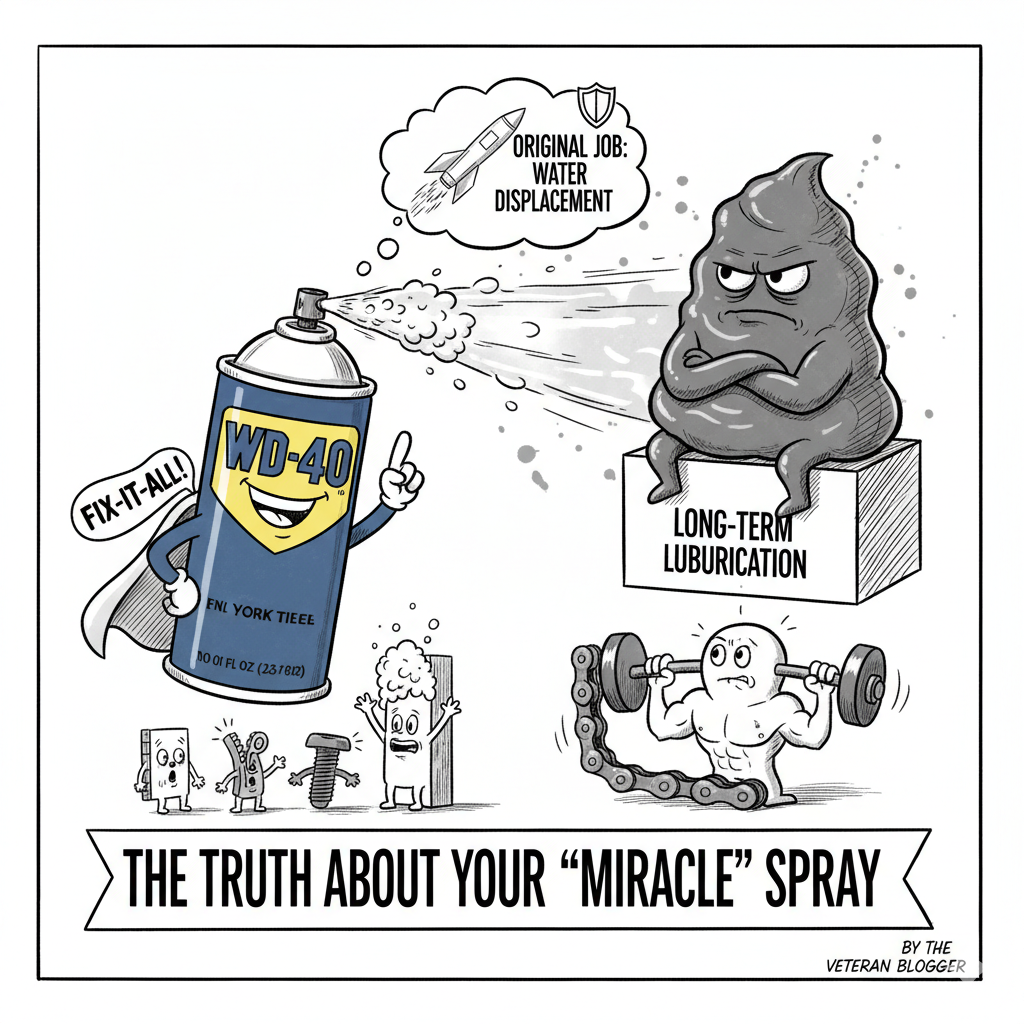That 'Miracle Spray' You Love: What WD-40 Really Is (and Isn't) 🧐

TL;DR: WD-40 was created to keep missiles from rusting by kicking out water, not primarily to be a long-term lubricant, though it does a decent job cleaning and stopping immediate moisture.
Let’s Dig In
You know that blue and yellow can everyone keeps in the garage? The one you spray on everything from a squeaky door hinge to a rusty bolt? That’s WD-40. Here’s the stripped-down truth: The name stands for Water Displacement, 40th Formula. That’s it. Its original job, back in the 1950s, was to be a protective shield—a rust guard—for delicate missile parts by aggressively pushing water out of tiny spaces. Think of it like this: if your metal part is wet, WD-40 is the bouncer that immediately throws the water out so rust can’t set up shop.
It does contain some light lubricating oils, so it can make things move right now. It’s a great temporary fix for a stuck zipper or a noisy hinge because its liquid is thin—like a running stream—allowing it to sneak into tight spots where thick grease, the slow-moving glacier, can’t reach. However, because it’s so thin, that “stream” of protection evaporates quickly, often leaving behind a residue that can actually attract dust over time. So, while it’s a fantastic cleaner and water-kicker, if you need heavy-duty, long-lasting sliding support, you need to graduate to something thicker, like grease (the glacier) or a specialized dry lube (like a Teflon coating). Don’t rely on the bouncer for your marathon runner’s long-term training.
Go Deeper:
Link 1: Explore Myths, Legends & Fun Facts of the Blue & Yellow Can Link 2: WD-40 - Wikipedia Overview Link 3: WD-40 Technical Data Sheet